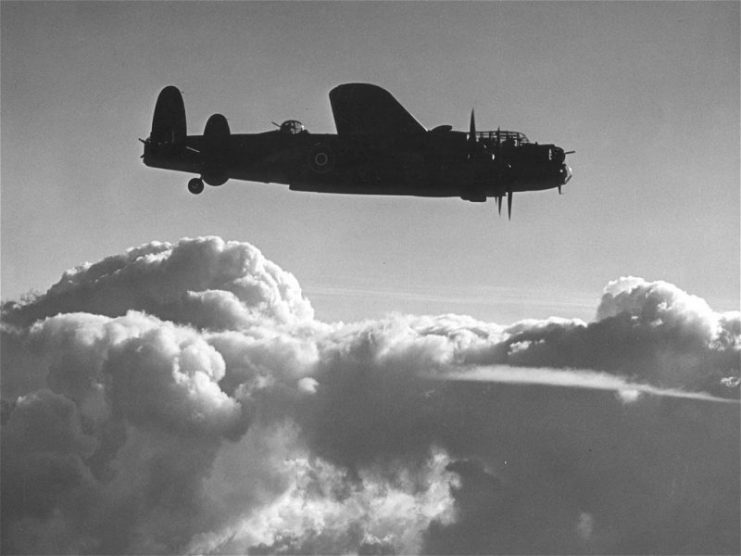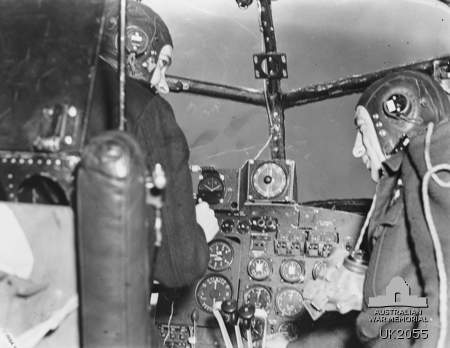Faced with a terrible choice – that of burning to death, or falling to his death, Alkemade chose the latter option.
Aerial combat, like naval combat, has many risks attached to it, many of which arise from the fact that the human beings involved in such battles are far removed from their natural element: land.
Whether a few thousand miles out to sea, or a few thousand feet up in the air, when you’re fighting so far out of your natural element, you risk death not only from your enemy’s weaponry but also from the inherent danger of falling from the skies or into the unforgiving ocean.
While we have invented means to mitigate these dangers, such as lifeboats and parachutes, if these last resorts fail death is usually a certainty.
Indeed, plummeting to the earth without a parachute from 18,000 feet in the air is pretty much guaranteed to end only one way for the unfortunate person involved – but, as history has often taught us there are always exceptions to the rules, and one man who miraculously survived a parachute-less jump from his burning airplane was World War II RAF airman Nicholas Alkemade.
Nicholas Alkemade was born in 1922 in Norfolk, England, and was a gardener before signing up with the Royal Air Force when WWII broke out. He was trained as an air gunner, and after completing his training he served as a tail gunner with RAF 115 Squadron.

Alkemade was part of a crew that flew an Avro Lancaster MK II bomber, which was capable of carrying the largest bombs used by the RAF during the Second World War. These bombers often flew night missions, and, as such, the bomber that Alkemade’s crew manned was christened Werewolf.
Alkemade flew fourteen successful missions with the crew of Werewolf, and on the night of 24 March 1944 they were part of a bombing raid targeting Berlin. They successfully delivered their payload, but on the return journey heavy winds took them off course. They ended up flying over the Ruhr region, which had a high concentration of anti-aircraft defenses.

Werewolf was attacked from below by a German night-fighter aircraft, and the resulting damage tore up Werewolf’s wing and fuselage, and set the plane on fire. It was obvious that Werewolf was beyond salvation, and the pilot ordered the crew to grab their parachutes in preparation for an emergency exit from the burning aircraft.
Alkemade, alone in his turret at the back of the plane, was already being scorched by the flames, with his rubber oxygen mask beginning to melt on his face, and his arms seared by the fire. Scrambling for his parachute in a panic, he was hit with a moment of pure dread when he finally located it – for his parachute, like everything else around him, was on fire.

Faced with a terrible choice – that of burning to death, or falling to his death, Alkemade chose the latter option. Better to suffer the brief terror of the fall and have a swift, merciful end than suffer through the torment of fire. He jumped from the burning plane without his parachute, and, falling at almost 120mph and looking up at the starry sky and the burning airplane from which he had just jumped, he lost consciousness.
Amazingly he woke up three hours later, lying in deep snow in a pine forest. It seemed that the flexible young pines had slowed his descent enough that the snow was able to cushion his fall. He had not broken any bones, but had managed to sprain his knee after his 18,000 foot fall from the sky. In addition, he had suffered burn wounds from the fire and had pieces of perspex from his flak-shattered screen embedded in his skin.

While he had survived the fall, surviving the rest of the night was not a guarantee. His knee was in too much pain for him to walk, and the freezing cold was beginning to take its toll.
He began blowing his distress whistle, which eventually attracted the attention of some German civilians. He was taken to Meschede Hospital where his wounds were treated, and when he was well enough to talk, he was interrogated by the Gestapo.
He told them his story, but they refused to believe that he could have survived such a fall without a parachute. They insisted that he had buried his parachute somewhere and that he was a spy – but when they sent men to investigate the landing site, as well as the wreckage of Werewolf, they were amazed to find that the remains of Alkemade’s parachute were indeed still in the wreckage of the plane.

Alkemade then became something of a celebrity, and met a number of Luftwaffe officers who wanted to hear about his miraculous jump. However, this did not earn him any special treatment, and like any other captured Allied airman he was sent to the notorious prison camp Stalag Luft III.
Read another story from us: Revealing the Ineffectiveness of Early British Night-Bombing Raids
Alkemade’s luck remained with him, though. When the camp’s 10,000 inmates were forced to trek hundreds of miles across northern Germany, through a blizzard, with temperatures dropping as low as -22 degrees C, he survived and was eventually liberated.
After the war Alkemade worked in the chemical industry in the UK, and lived to the age of 64. He passed away in June 1987.
